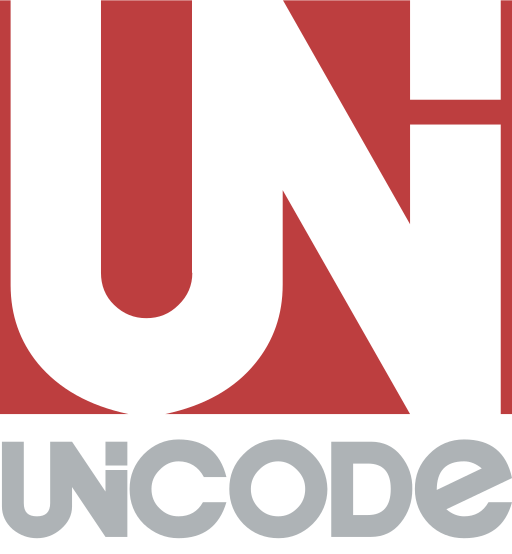Unicode Consortium
 | |
| Founder | |
|---|---|
| Founded at | California, United States |
| Type | Non-profit consortium |
Key people | Mark Davis (President) |
| Website |
unicode |
The Unicode Consortium (Unicode Inc.) is a 501(c)(3) non-profit organization based in Mountain View, California.[1] Its primary purpose is to maintain and publish the Unicode Standard which was developed with the intention of replacing existing character encoding schemes which are limited in size and scope, and are incompatible with multilingual environments. Unicode's success at unifying character sets has led to its widespread adoption in the internationalization and localization of software.[2] The standard has been implemented in many recent technologies, including XML, the Java programming language, Swift, and modern operating systems.[3]
There are various levels of membership, and any company or individual willing to pay the membership dues may join this organization. Full members include most of the main computer software and hardware companies with any interest in text-processing standards, including Adobe, Apple, Facebook, Google, Huawei, IBM, Microsoft, Oracle Corporation, Yahoo! and SAP SE.[4][5] Technical decisions relating to the Unicode Standard are made by the Unicode Technical Committee (UTC).[6]
Founding
The project to develop a universal character encoding scheme called Unicode was initiated in 1987 by Joe Becker, Lee Collins and Mark Davis.[7] The Unicode Consortium was incorporated in California on January 3, 1991, with the stated aim to develop, extend, and promote the use of the Unicode Standard.[8] Mark Davis has been president of the Unicode Consortium since the consortium was incorporated in 1991.[9]
Work
The Unicode Consortium cooperates with many standards development organizations, including ISO/IEC JTC 1/SC 2 and W3C. Apart from The Unicode Standard (TUS) and its annexes (UAX) the Unicode Consortium also maintains the CLDR, collaborated with the IETF on IDNA, and published related standards (UTS), reports (UTR), and utilities.[10][11]
Publications
- The Unicode Standard, Version 5.0 (5th ed.). Addison-Wesley. October 2006. ISBN 978-0-321-48091-0.
- The Unicode Standard, Version 4.0. Addison-Wesley. August 2003. ISBN 978-0-321-18578-5.
See also
References
- ↑ Wong, Queenie (2016-02-12). "Q&A: Mark Davis, president of the Unicode Consortium, on the rise of emojis". The Mercury News. Retrieved 2018-04-05.
- ↑ "How will you type the new Rupee symbol?". IBNLive. 15 July 2010. Archived from the original on 18 July 2010.
- ↑ "Strings and Characters". The Swift Programming Language (Swift 4.1). Apple. Retrieved 25 April 2018.
- ↑ "The Unicode Consortium Members". Unicode, Inc. Retrieved 16 March 2010.
- ↑ Unicode, Inc. (15 September 2015). "Facebook Joins as Full Member of the Unicode Consortium". The Unicode Blog. Retrieved 25 August 2017.
- ↑ McGowan, R. "A Summary of Unicode Consortium Procedures, Policies, Stability, and Public Access". tools.ietf.org. Retrieved 2018-04-05.
- ↑ "History of Unicode : Summary Narrative". Unicode Consortium. Retrieved 25 April 2018.
- ↑ "Unicode History Corner". Unicode, Inc. Retrieved 25 August 2017.
- ↑ "Unicode Directors, Officers and Staff". Unicode Consortium. Retrieved 25 April 2018.
- ↑ "Unicode Technical Reports". Unicode, Inc.
- ↑ "Unicode Utilities: Internationalized Domain Names (IDN)". Unicode, Inc.
External links
| Wikibooks has a book on the topic of: Unicode/Character_reference |